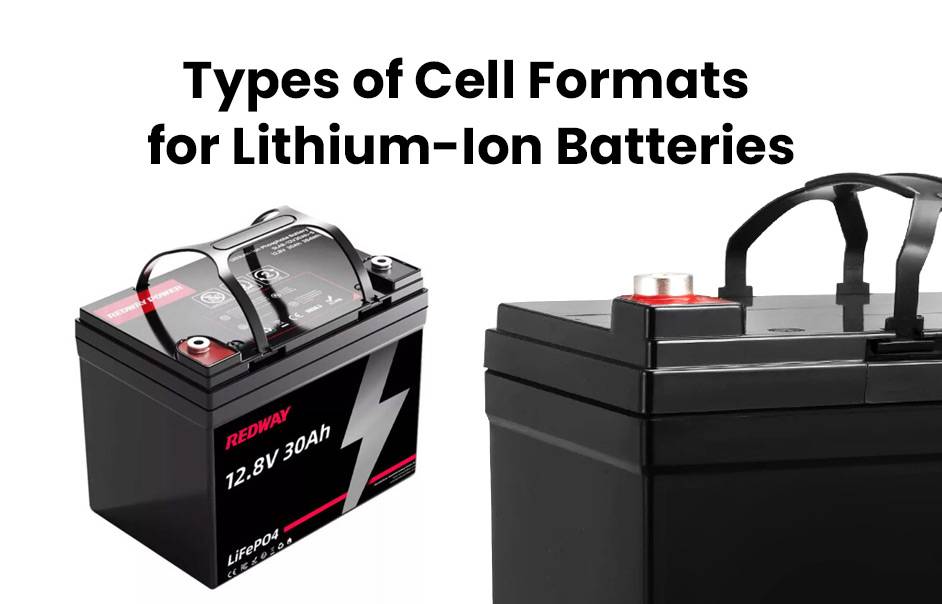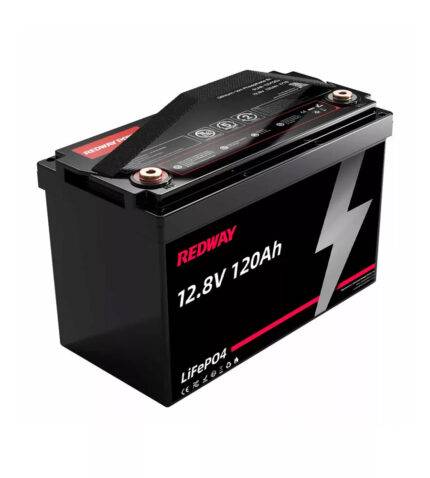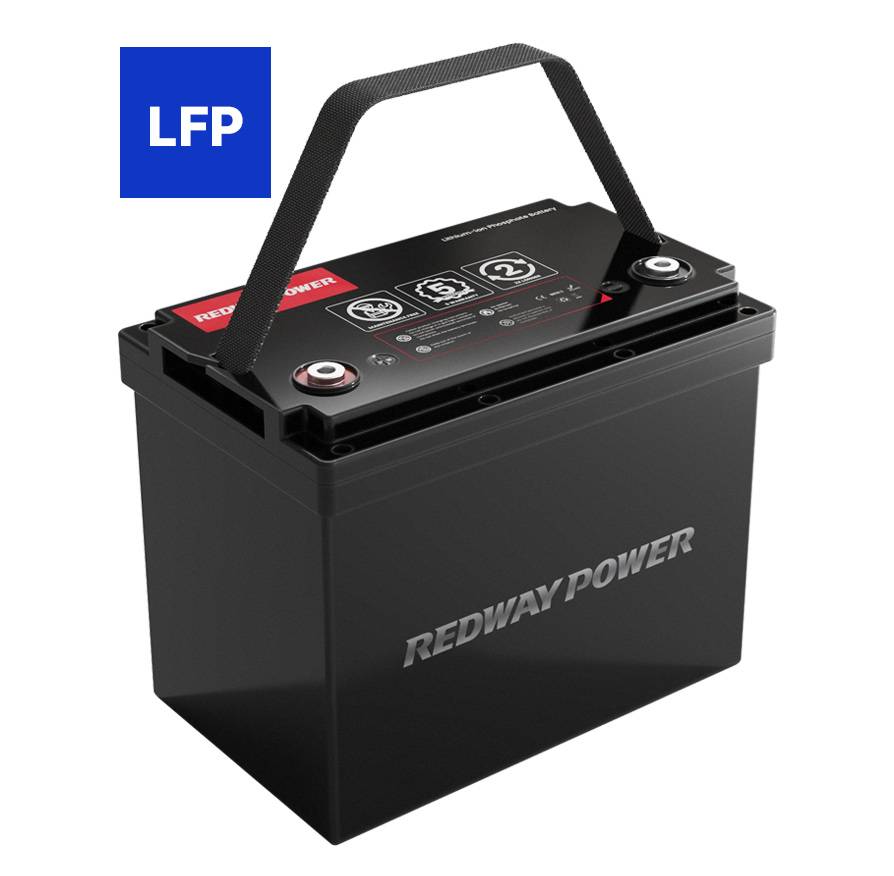- Rack-mounted Lithium Battery
- Golf Cart Lithium Battery
-
Golf Cart Lithium Battery
- 36V 50Ah (for Golf Carts)
- 36V 80Ah (for Golf Carts)
- 36V 100Ah (for Golf Carts)
- 48V 50Ah (for Golf Carts)
- 48V 100Ah (Discharge 100A for Golf Carts)
- 48V 100Ah (Discharge 150A for Golf Carts)
- 48V 100Ah (Discharge 200A for Golf Carts)
- 48V 120Ah (for Golf Carts)
- 48V 150Ah (for Golf Carts)
- 48V 160Ah (Discharge 100A for Golf Carts)
- 48V 160Ah (Discharge 160A for Golf Carts)
-
Golf Cart Lithium Battery
- Forklift Lithium Battery
- 12V Lithium Battery
- 24V Lithium Battery
- 36V Lithium Battery
- 48V Lithium Battery
-
48V LiFePO4 Battery
- 48V 50Ah
- 48V 50Ah (for Golf Carts)
- 48V 60Ah (8D)
- 48V 100Ah (8D)
- 48V 100Ah
- 48V 100Ah (Discharge 100A for Golf Carts)
- 48V 100Ah (Discharge 150A for Golf Carts)
- 48V 100Ah (Discharge 200A for Golf Carts)
- 48V 150Ah (for Golf Carts)
- 48V 160Ah (Discharge 100A for Golf Carts)
- 48V 160Ah (Discharge 160A for Golf Carts)
-
48V LiFePO4 Battery
- 60V Lithium Battery
-
60V LiFePO4 Battery
- 60V 20Ah
- 60V 30Ah
- 60V 50Ah
- 60V 50Ah (Small Size / Side Terminal)
- 60V 100Ah (for Electric Motocycle, Electric Scooter, LSV, AGV)
- 60V 100Ah (for Forklift, AGV, Electric Scooter, Sweeper)
- 60V 150Ah (E-Motocycle / E-Scooter / E-Tricycle / Tour LSV)
- 60V 200Ah (for Forklift, AGV, Electric Scooter, Sweeper)
-
60V LiFePO4 Battery
- 72V~96V Lithium Battery
- E-Bike Battery
- All-in-One Home-ESS
- Wall-mount Battery ESS
-
Home-ESS Lithium Battery PowerWall
- 24V 100Ah 2.4kWh PW24100-S PowerWall
- 48V 50Ah 2.4kWh PW4850-S PowerWall
- 48V 50Ah 2.56kWh PW5150-S PowerWall
- 48V 100Ah 5.12kWh PW51100-F PowerWall (IP65)
- 48V 100Ah 5.12kWh PW51100-S PowerWall
- 48V 100Ah 5.12kWh PW51100-H PowerWall
- 48V 200Ah 10kWh PW51200-H PowerWall
- 48V 300Ah 15kWh PW51300-H PowerWall
PowerWall 51.2V 100Ah LiFePO4 Lithium Battery
Highly popular in Asia and Eastern Europe.
CE Certification | Home-ESS -
Home-ESS Lithium Battery PowerWall
- Portable Power Stations
What are the cell formats for lithium-ion batteries?

Explore the diverse world of lithium-ion battery cell formats, powering everything from gadgets to electric vehicles. Discover cylindrical, prismatic, and pouch cells, each with unique pros and cons. Whether you’re a tech enthusiast or curious about energy storage, this article provides valuable insights into choosing the right battery format for your needs. Get ready to dive into the electrifying world of lithium-ion batteries!
Types of Cell Formats for Lithium-Ion Batteries
When it comes to lithium-ion batteries, there are several types of cell formats available. These formats determine the shape and size of the battery cells, which can have an impact on their performance and usability.
One common cell format is the cylindrical format. As the name suggests, these batteries are shaped like cylinders and are commonly used in devices such as laptops and power tools. They offer a good balance between energy density and cost-effectiveness. However, their cylindrical shape can limit design flexibility in certain applications.

Another cell format is the prismatic format. These batteries have a rectangular or square shape, making them easier to stack together for increased capacity. Prismatic batteries are often used in electric vehicles due to their high energy density and ability to fit into tight spaces. However, they tend to be more expensive than cylindrical cells.
We have pouch cell format which consists of flexible pouches that hold the battery materials inside. Pouch cells are lightweight and thin, making them ideal for slim devices like smartphones and tablets where space is limited. They also offer good thermal management capabilities but may not provide as much mechanical protection as other formats.
Choosing the right cell format depends on various factors such as application requirements, space constraints, and budget considerations. Each format has its own advantages and disadvantages that need to be carefully evaluated before making a decision.
Overview of Cylindrical Cell Format
The cylindrical cell format is one of the most common types of lithium-ion battery formats available. As the name suggests, these cells have a cylindrical shape and are often referred to as “18650” cells due to their dimensions (18mm in diameter and 65mm in length).
One key advantage of the cylindrical cell format is its robust design. The sturdy casing provides excellent protection for the internal components, making it less prone to damage from external factors such as vibrations or impacts. Additionally, the cylindrical format allows for efficient heat dissipation during charging and discharging processes.
Another benefit of cylindrical cells is their high energy density. This means that they can store a significant amount of energy relative to their size, making them ideal for applications where space is limited but high power output is required.
Cylindrical cells also offer good cycle life and are known for their reliability. They can withstand numerous charge-discharge cycles without experiencing significant degradation in performance.
However, there are some drawbacks associated with this format as well. The round shape makes it difficult to pack these cells tightly together, resulting in wasted space when designing battery packs.
Despite these limitations, the cylindrical cell format remains popular due to its proven track record and widespread availability. It continues to be used in various applications ranging from consumer electronics like laptops and smartphones to electric vehicles and renewable energy storage systems.
The cylindrical cell format offers durability, high energy density, and reliable performance at a reasonable cost. Its unique design makes it suitable for a wide range of applications where space constraints may not be critical.
Advantages and Disadvantages of Prismatic Cell Format

The prismatic cell format is a popular choice among manufacturers when it comes to lithium-ion batteries. Let’s take a closer look at the advantages and disadvantages of this particular format.
One major advantage of the prismatic cell format is its compact size. These cells are typically flatter and more square-shaped, allowing for efficient use of space within electronic devices. This makes them ideal for applications where size matters, such as smartphones or tablets.
Additionally, prismatic cells have a lower internal resistance compared to other formats. This means they can deliver higher power output, making them suitable for high-drain devices that require quick bursts of energy.
On the flip side, one disadvantage of prismatic cells is their relative fragility. Due to their thin design, they may be more susceptible to damage from impact or excessive heat. This can result in reduced performance or even complete failure if not handled with care.
Another drawback is that prismatic cells are generally more expensive to produce compared to cylindrical or pouch formats. The manufacturing process involves precise assembly techniques and specialized materials, which adds to the overall cost.
Despite these drawbacks, many manufacturers still choose the prismatic cell format due to its efficiency and versatility in various electronic applications. Each cell format has its own unique set of advantages and disadvantages that should be considered when selecting the right battery for your needs.
Exploring the Pouch Cell Format
The pouch cell format is another popular option when it comes to lithium-ion batteries. Unlike cylindrical and prismatic cells, the pouch cell does not have a rigid outer casing. Instead, it features a flexible pouch or bag made of an aluminum laminate material.
One of the main advantages of the pouch cell format is its compact size and lightweight design. The lack of a rigid casing allows for more efficient use of space, making them ideal for applications where size and weight are critical factors.
Pouch cells also offer excellent energy density, meaning they can store a high amount of energy in relation to their size. This makes them suitable for portable electronic devices such as smartphones and tablets.
Additionally, the flexibility of the pouch cell enables manufacturers to shape the battery according to specific requirements. This flexibility also allows for customization in terms of dimensions and capacity.
However, there are some drawbacks to consider with this format. Pouch cells may be more susceptible to damage from physical impact compared to other formats due to their lack of external protection. They may also have slightly lower durability over time compared to cylindrical or prismatic cells.
Despite these limitations, the pouch cell format continues to gain popularity due to its versatility and potential cost savings in production processes.
Exploring the possibilities offered by different cell formats is essential when considering lithium-ion batteries for your needs. Each format has its own unique advantages and disadvantages that should be carefully considered before making a decision on which one best suits your requirements!
How to Choose the Right Cell Format for Your Needs

Now that you have a good understanding of the different cell formats available for lithium-ion batteries, it’s time to determine which one is best suited for your needs. Here are some factors to consider when making your decision:
1. Size and Shape: Consider the physical dimensions and shape requirements of your device or application. Cylindrical cells are often used in devices like laptops, power tools, and electric vehicles due to their standardized sizes. Prismatic cells offer more design flexibility but may be bulkier. Pouch cells are highly customizable in terms of size and shape.
2. Energy Density: If maximizing energy capacity is crucial, cylindrical cells tend to have higher energy density compared to prismatic or pouch cells. However, advancements in technology have narrowed this gap significantly.
3. Cost: Different cell formats vary in cost due to factors such as manufacturing complexity and materials used. Cylindrical cells generally have lower costs due to economies of scale, while prismatic and pouch cells can be more expensive.
4. Safety Requirements: Consider the safety aspects associated with each cell format. Prismatic and pouch cells often incorporate additional safety features like internal protection circuits that prevent overcharging or overheating.
5.Longevity: Evaluate how long-lasting you require your battery pack to be based on your specific application needs—cylindrical cells typically exhibit better cycle life compared to prismatic or pouch cells.
6.Environmental Impact: Consider sustainability concerns if environmental impact is important to you or your organization’s values—prismatic and pouch cell formats tend to use fewer raw materials during manufacturing than cylindrical ones.
By carefully considering these factors alongside any other unique requirements relevant to your project or device specifications, you’ll be able select the most suitable lithium-ion battery cell format that meets both technical demands and budget constraints without compromising on quality or performance!













